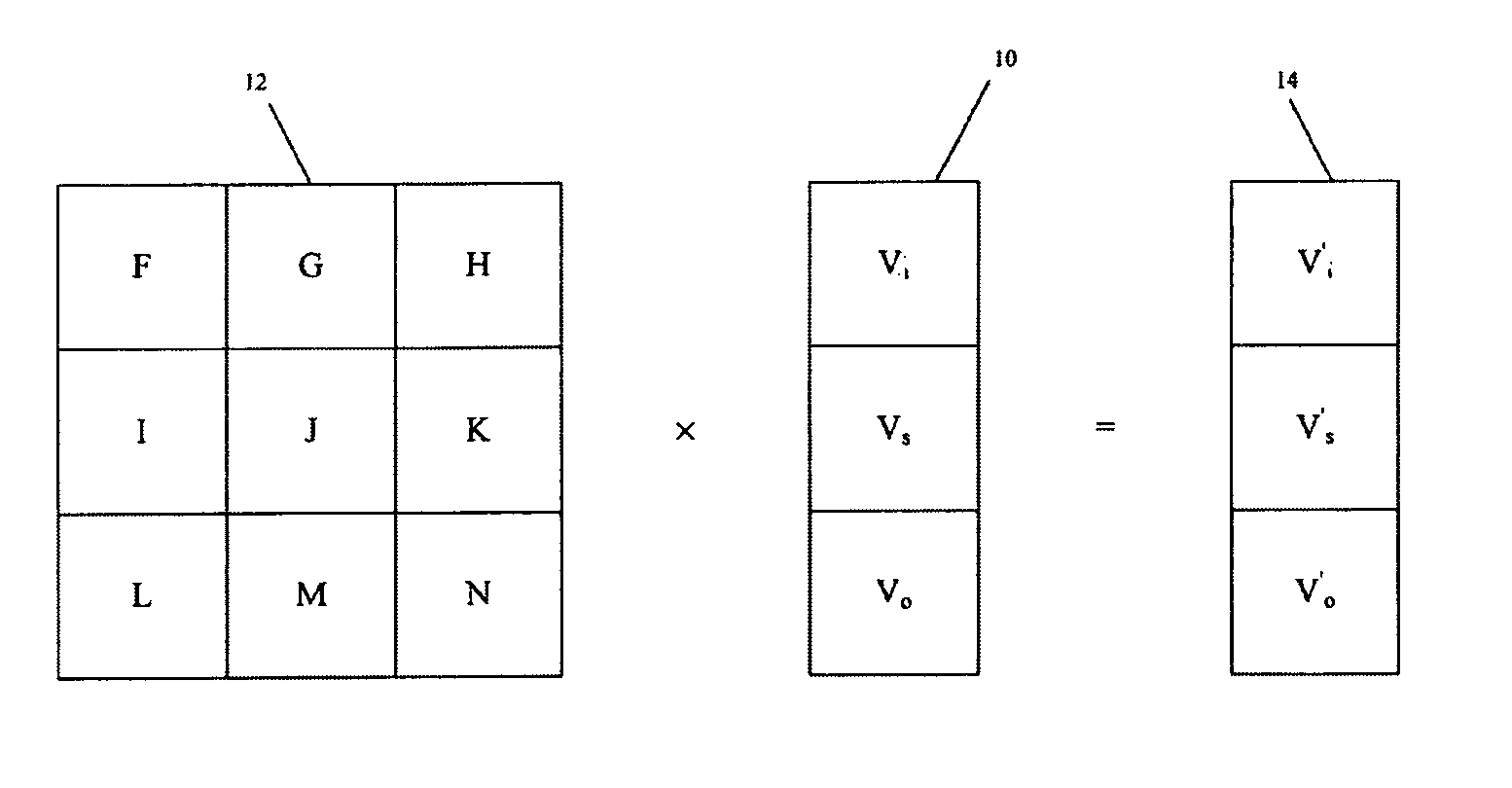LFSR emulation
a technology of vector length and emulation, applied in the field of lfsr emulation, to achieve the effect of reducing the vector length
- Summary
- Abstract
- Description
- Claims
- Application Information
AI Technical Summary
Benefits of technology
Problems solved by technology
Method used
Image
Examples
Embodiment Construction
[0049]One embodiment of the present invention is a CRC generator and checker than can process 32 data bits at a time, as shown in FIG. 1.
[0050]FIG. 1 is a traditional LFSR-based implementation of CRC checker and generator hardware for the generator polynomial D24+D23+D6+D5+D+1. (This is the 24-bit CRC that is used for 3GPP.) The squares marked ‘D’ are flip-flops and the circles marked ‘+’ are modulo-2 adders (i.e. exclusive-or gates).
[0051]FIG. 1 is a traditional implementation of a CRC generator and checker. Its initial state is all zeros. The data is presented one bit at a time as Din. After all the data has been presented, the state contains the CRC. If the correct CRC bits are presented after the data, the final state will be all zeros.
[0052]From this implementation the transfer matrix ACRC of FIG. 2 can be generated as described in the earlier list of bullet points. FIG. 2 is a transfer matrix, ACRC, for the CRC generator polynomial of FIG. 1, with a total of 56 rows and column...
PUM
 Login to View More
Login to View More Abstract
Description
Claims
Application Information
 Login to View More
Login to View More - R&D
- Intellectual Property
- Life Sciences
- Materials
- Tech Scout
- Unparalleled Data Quality
- Higher Quality Content
- 60% Fewer Hallucinations
Browse by: Latest US Patents, China's latest patents, Technical Efficacy Thesaurus, Application Domain, Technology Topic, Popular Technical Reports.
© 2025 PatSnap. All rights reserved.Legal|Privacy policy|Modern Slavery Act Transparency Statement|Sitemap|About US| Contact US: help@patsnap.com



